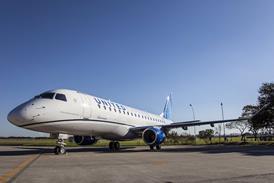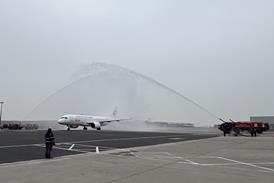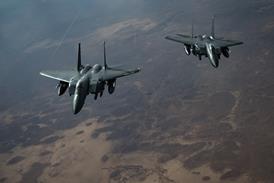There were no immediate signs of pre-impact engine damage to the power units on the Cessna Citation 500 that crashed near Biggin Hill airport, UK.
This is despite a crew radio call reporting "a major power problem" before the aircraft hit the ground, according to an initial bulletin from the Air Accidents Investigation Branch.
The aircraft did not have a flight data recorder or cockpit voice recorder, says the investigator - they are not required for aircraft in that category.
The 30 March accident happened within 3min of take-off, reveals the bulletin, and the aircraft crashed into a temporarily unoccupied house in Romsey Close, Farnborough village, while the crew was attempting to fly a left-hand base leg to return to runway 21.
The AAIB says the aircraft had been cleared to taxi to the holding point for runway 21, and cleared for a Lydd 2 departure. The latter entails a right turn after take-off, passing overhead of the airfield and taking up a south-easterly heading at 2,400ft (730m).
After he cleared the aircraft for take-off at 13:33 (see diagram) the tower controller reported that nothing appeared unusual. But a minute later the co-pilot called: "We're making an immediate turn to return to the airport."
The controller asked what the problem was and the co-pilot responded that he did not know, but that "we're getting engine vibration".
The AAIB reports that the aircraft was overhead of the airfield at 1,200ft (the airfield elevation is 517ft) by this stage, and the crew was "heading toward the end of the downwind leg for a left hand circuit to runway 21".
From this point, the bulletin says, the aircraft began a continuous descent, and the co-pilot's last transmission at 13:36 stated: "We have a major problem, a major power problem, it looks as if we're going in."
 |
|---|
© Flight International |
The AAIB says it searched all the areas the aircraft passed over for signs of debris and found none. It adds: "Examination of the wreckage...did not reveal any evidence of pre-impact restrictions in the flight-control circuits and examination of the engines, after disassembly, revealed no evidence of either engine having suffered a birdstrike or foreign object damage. Furthermore, no pre-impact damage or failures were found in any of the rotating assemblies or main bearings."
Source: Flight International























